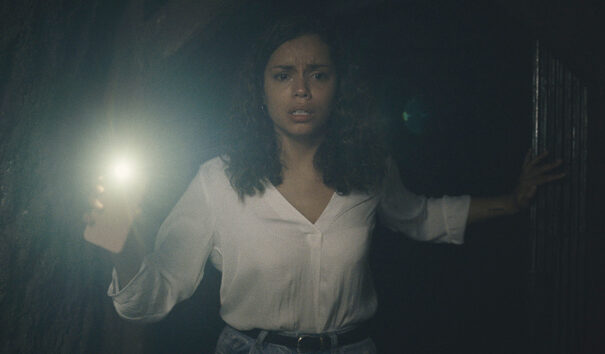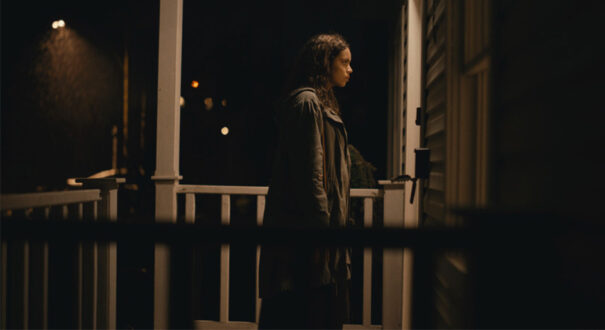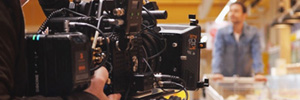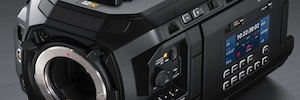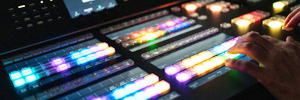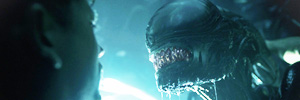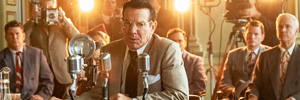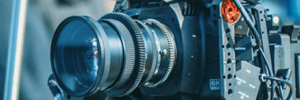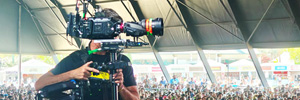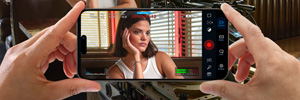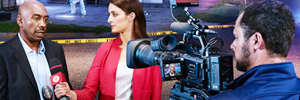DaVinci Resolve Studio faces the darkness of ‘Barbarian’
Sam Daley (Light Iron) has chosen DaVinci Resolve Studio (Blackmagic Design) to colour grade the visually challenging horror film Barbarian.
Produced by BoulderLight Pictures, Barbarian tells the story of a young woman who travels to Detroit for a job interview. Arriving late at night at the accommodation booked through Airbnb, she discovers that a stranger is already staying there. Against his better judgment, he decides to spend the night anyway, but soon discovers that there is much more to fear in the house than the other guest.
Sam Daley of post-production company Light Iron was responsible for the colour grading on the film, relying on DaVinci Resolve Studio, Blackmagic Design’s editing, colour grading, visual effects and audio mixing software. While Daley didn’t have much experience in the horror genre, his previous work with Zach Kuperstein (who served as cinematographer on Barbarian) prepared him for the style Kuperstein wanted to adopt when shooting the film. “Zach and I already have a track record working together in the genre,” said Daley. “For this film, the mood was established with Zach’s lighting and the production design, with my job to interpret those visuals into the final look,” says Daley.
To address this challenge, Daley created a LUT specifically for the production of Barbarian in Bulgaria using DaVinci Resolve Studio. However, before starting the colour grading work, the post-production expert offered Kuperstein and Zach Cregger, the film’s director, different options: “I showed them different visual interpretations of the story, some pushing into the horror genre, others more traditional. The Zachs (Kuperstein and Cregger) chose a more traditional look for the finish. I think that’s partly why the look of the film stands out; we’re not announcing to the audience that this is a horror movie via the color grade.”
Challenges from shooting to post-production
Although Barbarian was shot in dark houses and spaces capable of shocking the viewer, one of the most challenging shots was atypical of the genre, as Daley conveys: There was a drone shot over the Pacific Coast Highway that begins act two. It starts looking into the sun and travels down to highlights glistening in the ocean and finishes on a backlit convertible driving along a rock wall on the highway. I flew in shapes and dynamics to make the exposure of the shot feel seamless. I also love to sneak in a little dehaze to bring out more saturation and detail.”
The Barbarian story also includes sequences shot in vast underground spaces with low lighting, all shot with DaVinci Resolve Studio: “There are scenes that take place in a network of tunnels that are lit only by a smartphone flashlight. The Zachs wanted the audience to feel the claustrophobia of the space but didn’t want the actors disappearing into the walls. So I graded for the actors’ faces and let the flashlights clip a bit, as if your pupils are struggling to see what lurks in the shadows and not what the light is illuminating.”
To achieve these and other visual results in Barbarian’s colour treatment, Daley relies, among other tools, on the OpenFX plug-ins available in DaVinci Resolve Studio, looking for unique ways to use and combine them: “I like to layer film grain in two parallel nodes, one that simulates film negative grain and a second that simulates film print grain. However, for a sequence that takes place in the early 1980s, Zach wanted a crisp video look, so there I used the video noise option within the analog damage plug in along with a little bit of dehaze to give the image more snap. There are a couple brief scenes set in the current time period where a VHS video camera is seen in a room. There again I used video noise instead of film grain to help subconsciously link a story element.”
Hat Ihnen dieser Artikel gefallen?
Abonnieren Sie unsere Füttern Und es wird Ihnen an nichts fehlen.



